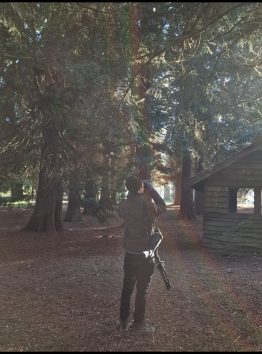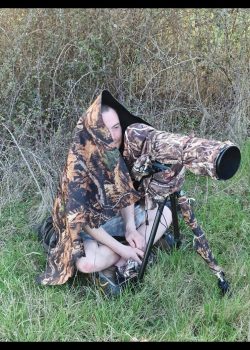Assistant Ornithologist - Caleb Stradling
Hello fellow Curlew lovers! My name is Caleb and I’ve just joined the Curlew Country team this year as an Assistant Ornithologist. I am an MSc student of Ecology and Conservation at the University of East Anglia, where I am learning how to apply various survey methods to inform and monitor outcomes of conservation projects. As a great lover of wildlife and birds in particular, I leapt at the chance to come and work for such an exciting project, helping these beautiful, charismatic and characterful birds, who are so desperately in need of help right now.
By the time I arrived in Shropshire (end of April) many of the Curlews were already in their territories, showing signs of nesting. Before I’d had a chance to unpack, the phone rang and I was off to see my first Curlews’ nest. As the pair had already laid two eggs, we could safely and quickly put up an electric fence to keep terrestrial predators out. Since they will only start to incubate on a full clutch, this is an ideal time to carry out the work to prevent any risk of eggs going cold while the birds are temporarily disturbed. If a nest is found with just one egg, then we don’t want to risk putting them off, as they will not be as invested in the nest. Unfortunately, some of the nests we find are predated before we get the chance to fence them, which is of course upsetting, but reminds us of our reasons for doing what we do!

There are plenty of reasons to be cheerful however, as we know that several of our headstarted birds from previous years have returned to Shropshire to set up breeding territories of their own. We learn this by reading the unique codes printed on colour-ringed individuals through a high-powered spotting scope. This can be really tricky at this time of year as the grass grows tall and tussocky. Great for the Curlews to hide in but it can mean hours spent straining the eyes and telepathically willing a Curlew to just take a few more steps to the left! Getting close enough to a Curlew to read the rings is a challenge, as they are wary birds with fantastic eyesight. We joke that we need to go out in a sheep costume as they appear to completely ignore them. Although a Curlew has been known to bite a ram on the bottom when they strayed too close to a nest so it’s best to be careful!

